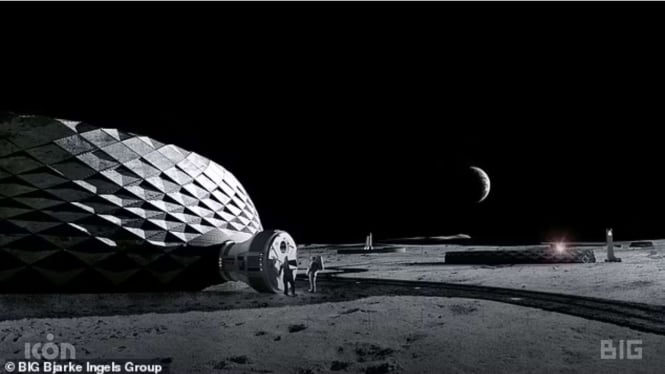NASA Plans to Build Civilian Houses on the Moon by 2040
- BIG Bjarke Ingels Group
Jakarta – The National Aeronautics and Space Administration or NASA has ambitious plans to build a home on the Moon by 2040 using 3D printer technology.
This means it would be for not just astronauts but also civilians. They have awarded a $60 million or IDR 908 million contract to a construction technology company called ICON to build the houses.
The plan is to launch a giant 3D printer to the moon and use lunar concrete made of rocks, mineral fragments and dust to layer the structure on the surface.
NASA berencana bangun rumah di bulan
- ICON
NASA is also working with universities and private companies to construct doors, tiles and furniture for the moon home.
The agenda includes setting up an establishment on Mars for space-fairing heroes who will one day live on the Red Planet.
The plans are in the very early stages, with only renders from 2022 available to paint a picture of what the home could look like – the idea could change over the next decade.
Also, NASA is not sharing how much it would charge civilians for their getaway stay in the moon house.
Austin-based ICON, awarded the NASA contract in 2022, uses its 3D-printing expertise on Earth, constructing luxury homes layer by layer using its system, The Vulcan.
The technology lays out a mixture of cement, sand and water as filament. The filament is effectively an ink that comes out of the printer like thick ribbons stacked on each other.
Ilustrasi astronot yang sedang bercocok tanam di Bulan.
- Getty Images
All home components for instance, the walls and roof are printed separately and then slotted together afterward. The printer can build properties in as little as 48 hours.
ICON has been 3D printing homes since 2018 and has constructed over 100 across north Austin.
Homes built this way have become increasingly popular because they are quick to erect, with developers saying they could solve America's housing crisis. And NASA seems 3D-printed homes could be the next stage in its moon mission.
ICON shared that the infrastructure must better protect thermal, radiation and micrometeorite.
For now, NASA will first have to set up landing pads for the rockets to carry the 3D printer to the lunar surface. These pads will be away from the habitats to mitigate the dust kicked up during landing and takeoff.























